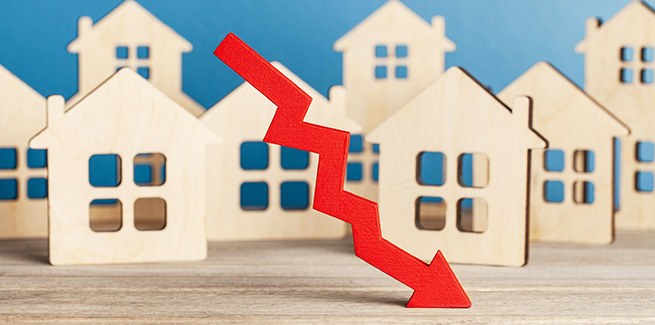The Housing Industry Association (HIA) affordability index has revealed a gap in the deterioration of housing affordability between regional Australia and the capital cities.
The HIA affordability index is calculated for each of the eight capital cities and regional areas on a quarterly basis, and takes into account the latest dwelling prices, mortgage interest rates, and wage trends.
The index has shown that across the regions, regional NSW saw the largest deterioration in affordability, down by 22.8 per cent in 2020-21.
This was followed by regional Tasmania (down 13.6 per cent), regional Queensland (down 10.3 per cent), regional Northern Territory (down 8.6 per cent), regional South Australia (down 8.1 per cent), and regional Victoria (down 6.5 per cent).
Affordability deterioration in regional Western Australia was a more subdued 0.6 per cent.
Across the capital cities, Hobart recorded the most significant deterioration in affordability, down by 18.7 per cent in 2020-21.
This was followed by Darwin (down 13 per cent), Canberra (down 10.2 per cent), Adelaide (down 8.7 per cent), Brisbane (down 6.3 per cent) and Perth (down 5.5 per cent).
Commenting on the trends, HIA economist Tom Devitt noted that while affordability deteriorated across all states and territories in both capital cities and regional areas, the pandemic has accelerated this deterioration in regional Australia.
He said: “Over the past two decades, housing affordability was a greater challenge in Sydney and Melbourne than the rest of the country. Yet, since the pandemic began, it is the rest of the country that has seen a faster deterioration in affordability.
“This is not surprising given the rapid exodus of population out of Sydney and Melbourne to other states and regions.”
The number of people who left Sydney and Melbourne in the last year was tens of thousands more than the number of people who arrived, Mr Devitt said.
“This is not unusual for Sydney but was a uniquely damaging development for Melbourne,” he said.
“In addition to this, Sydney and Melbourne suffered disproportionately from the closure of international borders and the associated loss of overseas migrant, student and tourist arrivals. This is why the deterioration in housing affordability was most acute outside of Sydney and Melbourne.”
Nevertheless, housing is broadly more affordable now than the average of the past two decades because of record-low interest rates, which has made it easier to service a typical mortgage, Mr Devitt added.
Property values in regional Australia have been surging this year, with CoreLogic data revealing earlier this year that the regional housing market surged by 13 per cent in the last 12 months, compared with a 6.4 per cent rise in capital city values.
CoreLogic research director Tim Lawless had attributed this to stronger demand for regional housing during the COVID-19 crisis as a result of the increasing popularity of remote and flexible working arrangements and increased demand for lifestyle-oriented properties and holiday homes.
However, while the rising property values in regional areas could be attractive for investors, property buyer Kate Hill cautioned first-time property investors that the trends may send the wrong message that every regional location would guarantee success for investors.
She said that while short-term migration patterns and current price growth may encourage investors to buy in regional areas, they may be left with an investment property in a location where new residents may reverse their decision and move back to the city in a year or two.
CoreLogic data also recently found that 60.1 per cent of properties are cheaper to buy than rent in the combined regional cities.
[Related: House price rise to top 20% in 2021: ANZ]

